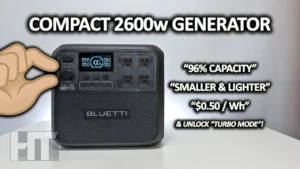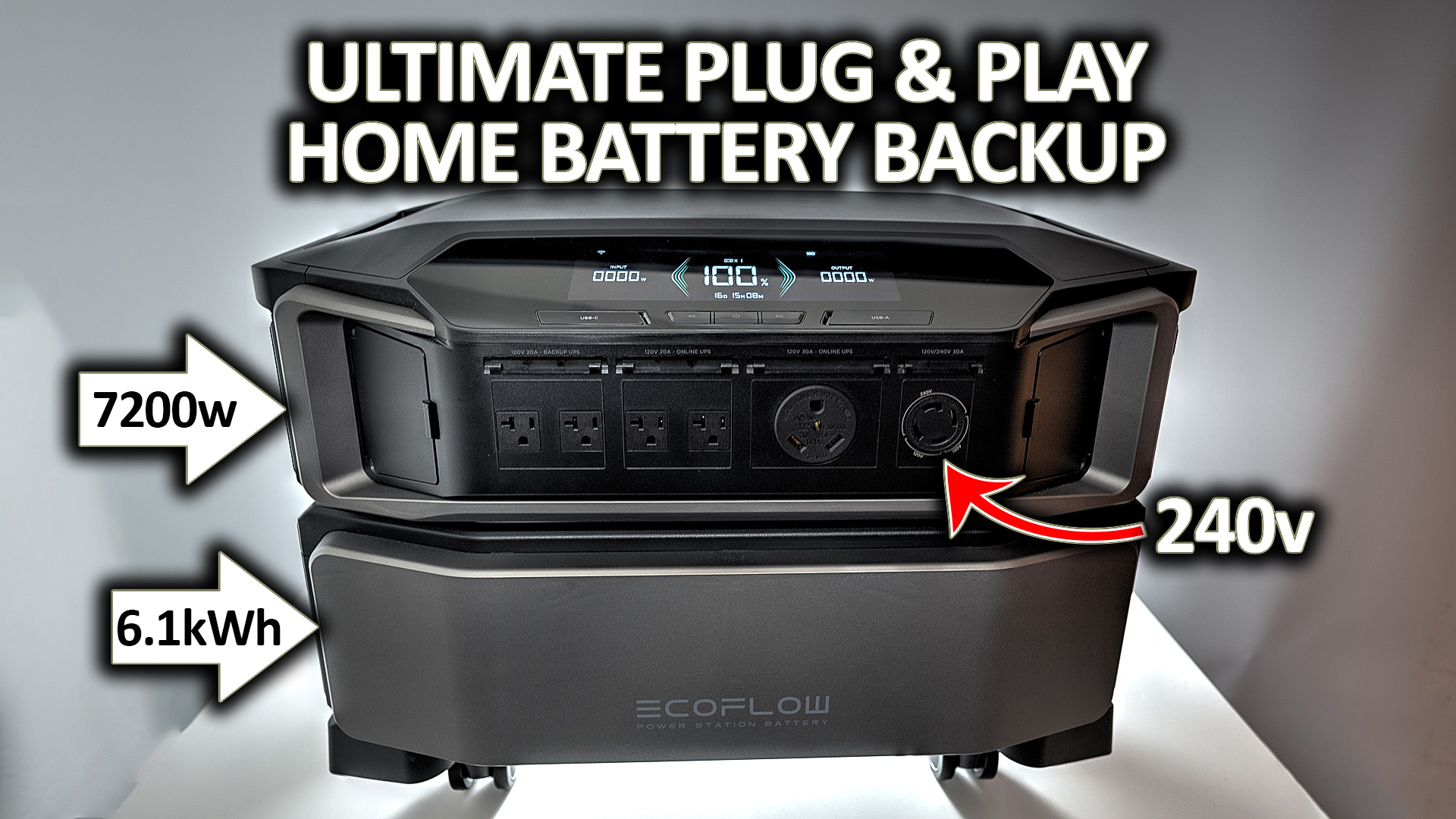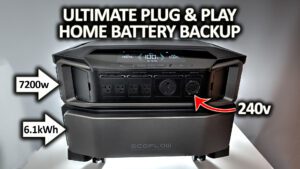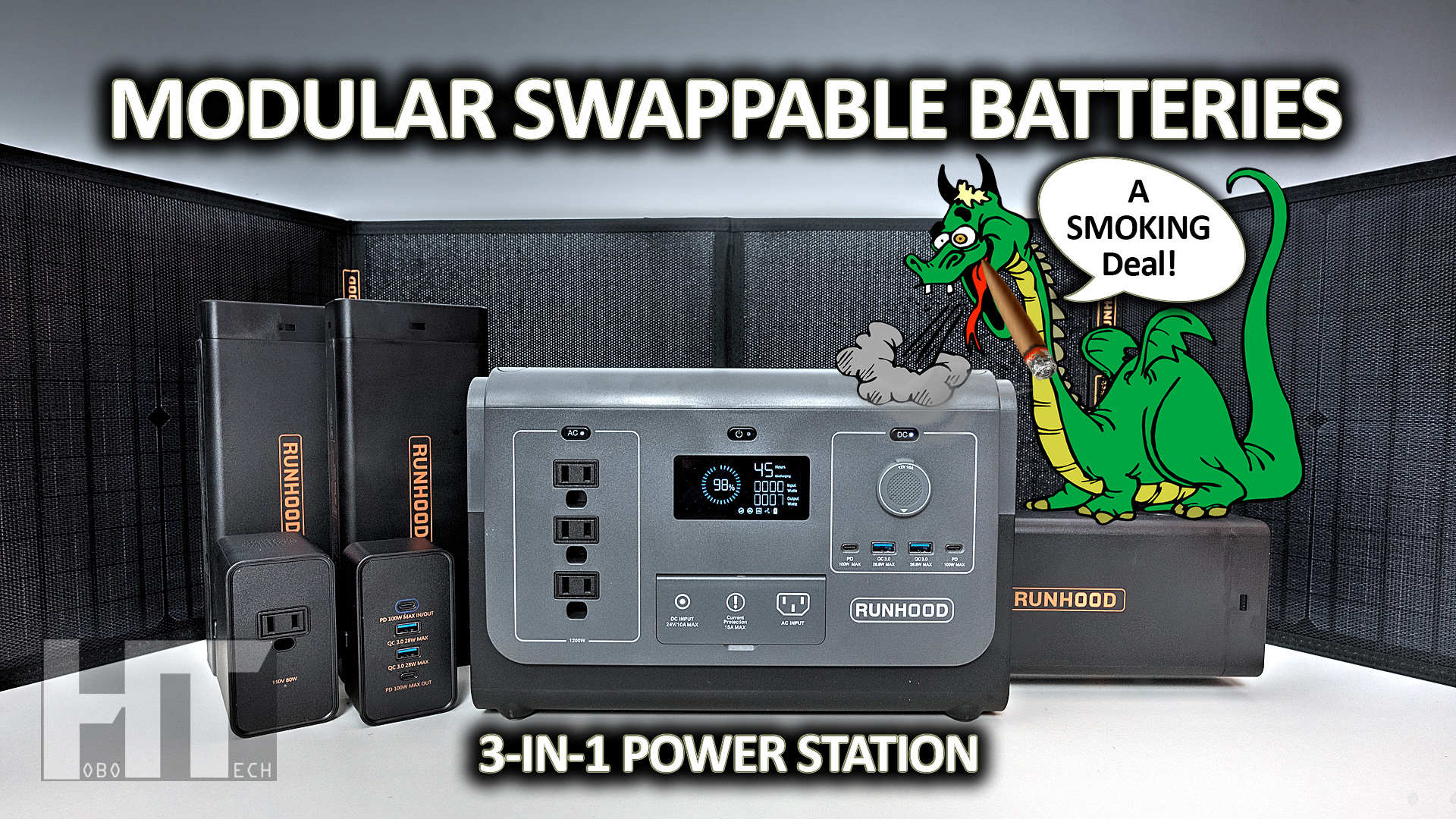
BLUETTI Elite 200 v2 | Crazy Efficient 2600w Portable Solar Power Station
The Professor reviews Bluetti’s new subcompact power saving 2600 watt portable power station / solar generator — the 2074Wh Elite 200 v2.
[BONUS: Includes password to unlock turbo / pro fast charge mode!]
Intro
-
Bluetti has launched a new subcompact 2600 watt portable power station that embraces a new naming scheme that should hopefully make more sense to customers going forward. The Elite 200 V2 is the successor to the now discontinued AC200P that offers a bigger inverter with more battery but is significantly smaller and lighter than any 2kWh model of the past. But, is it any good? Let’s find out!
Features
-
Battery Capacity/Tech/Cycles: 2074Wh automotive grade LFP battery rated for 6000 cycles. They don’t state to what capacity in the manual, but I’m assuming 70%.
-
Size/Weight: Here’s where the new Elite shines over any other midsize Bluetti of a similar spec. It’s only 14 x 10 x 13 inches at an amazingly slender 53 lbs. This is several inches smaller in each dimension and over 9 pounds lighter than the current AC200L, and THIS has the larger inverter. How they did this was with use of their very own TARDIS tech. Kidding of course. I actually have no idea how they did it. I know they are using a new wire free manufacturing technique that allows them to make smaller and more sturdy designs, but at the time of filming I have little information on this.
-
Design/Display: The Elite uses the current standard Bluetti display they are putting in every model now that includes all the important information such as input / output watts, time to charge / discharge, battery % display with icons. It does have both low and high temperature protection and icons will appear on the screen if any protections are activated. This Bluetti is also one of the few that has all the inputs and outputs on the front with exception of the AC input which is on the side. This will make many folks happy that like to use power stations in small spaces like RV’s or vans.
-
Inverter Size/Type and #outlets: As for that pure sine inverter, it’s a massive 2600w with a brief 5200w surge ability, and this is output through 4 standard 20A outlets. No 30A RV hookup on this model which was very surprising, but a TT-30R is a very large outlet and if you’re going for compactness, you simply can’t include one. If you do want to hook up a 30A RV, you can simply get a 20A to 30A dogbone adapter from my website https://hobotech.tv. With that you can still pull 2400w all day long which is more than enough for any RV roof air conditioner. You just won’t be able to use your microwave at the same time.
-
Ways To Charge : This Bluetti can charge via grid power at 1800w in turbo mode good for topping up in less than an hour and a half. In standard mode, it takes just under 2 hours and silent mode about 3 hours.
-
Of course it wouldn’t be a solar generator if it couldn’t charge from solar and this model includes a single MPPT solar controller good for 1000w of solar charging from 12-60v up to a whopping 20A. This means you can run more solar panels in parallel if you are using larger high voltage panels.
-
-
12v Output Types: As for DC outputs, this is where the Elite really cuts some corners to save space. Gone is the coveted 30A DC output of the past along with the usual 5521 barrel plug outputs. On the Elite 200 you get a single 12v regulated car accessory socket regulated at 13.3v and 10A, and that’s all she wrote.
-
USB Output Types: It does offer some well rounded USB options with a pair of 100w USB-C PD outputs and a pair of standard 5v USB ports good for charging your dinosaurs. Again, no USB-A QC ports.
-
Other Features: For those that hate apps, this Bluetti does allow the end user to modify many of the important settings via button presses. Also, for those that really need the outputs to turn themselves back on after the battery is dead and recharged, this model does it but you do have to set it up through the app.
-
Warranty: 5 years from Bluetti
Testing
-
DC Battery Capacity Test (time lapse): 1845wh for 89%
-
AC Battery Capacity Test (time lapse): 1990wh for 96%
-
Phantom load / Parasitic drain test
-
DC consumption: used 72wh (%) over 12 hours or about 144wh over 24 hours
-
AC consumption: used 88wh (%) over 6 hours or about 352wh over 24 hours. That’s a very exceptional 15w at idle for a 2600w inverter. If you left the inverter on it would take almost 6 days to kill the battery. That’s amazing and actually the best result of any product I’ve tested to date. If you’re looking for a power station you can leave on all the time to run a fridge, this is it.
-
-
I’m always asked how long stuff will run. Compensating for usable capacity, you can pause this chart to see approximately how long common appliances will run on this unit.
-
13500 btu RV a/c (1200w @50% cyc): 3 hrs
-
6000 btu window a/c (400w @50% cyc): 10 hrs
-
20cuft modern fridge (1.2kwh/day): 1.25 days
-
1500w heater: 1.3 hrs
-
1200w microwave (1800w): 1.1 hrs
-
Keurig coffee maker (1200w 60wh/c): 33 cups
-
Instant Pot (1000w @50% cyc): 4 hrs
-
Hot plate (500w): 4 hrs
-
55” LED TV (80w): 21 hrs
-
Macbook (60w): 26 hrs
-
Box Fan (50w): 30 hrs
-
CPAP (30w): 44 hrs
-
Chromebook (15w): 5 days
-
Tablet (5w): 7.5 days
-
-
Sine wave check under load: 120/60
-
Inverter capacity test (max): 3200w
-
15A saw test: pass
-
Cooling ability test (rated @ 5mins): 2600w
-
Inverter fan noise db: 50
-
Max Charge Rate AC @ watts/volts: fast 1750w ; quiet 800w; standard 1400w
-
DC Input Range: 12-60v 20A 1000w
-
Max Charge Rate DC @ watts/volts: 12v 100w; 24v 195w; 48v 850w; max 64v 1000w
-
Charging fan noise db: AC max 54db ; AC min 0db ; Solar 0db
-
Simultaneous charging ability: 2400w solar priority
-
Pass thru / UPS: 15ms PC pass
-
DC Output(s) Max Rate: 10A 12.5v
-
12v output(s) regulated: 13.3v
-
USB output rate check: 100w x 2 pass
-
Wireless/other output: na
-
Amp interference test: pass
-
AM radio test: DC low; AC moderate
-
EMF test: DC high 68; AC high 88
-
My Opinion
-
For those of you that thrive for simple, compact, yet very usable power for virtually any type of remote power use while camping, in a RV/van, or at a job site. The Elite 200 is for you. If you want easy, portable backup power for your home to run a fridge or other appliances when the power goes out, the Elite 200 is a great choice. If you plan to run a 12v compressor fridge, this is one of the best choices out there today as it just sips power with the DC turned on. Some of the other Bluetti products we’ve seen recently haven’t been so frugal with the juice.
-
If you’re looking for something with battery expansion ability or 30A outputs this is not for you. You’ll want to look into the AC200L or larger models. It’s also obvious that this is not a power station for whole home backup nor will this run your air conditioner all night long. That’s what the AC300 and 500 is for.
-
For the record, I was as confused as you were about the Elite 200 V2 naming scheme. I asked Bluetti what was up with the V2 part as there never was a V1. They said, “We’re not going to disclose this now. You need to wait for CES in January”. That’s a very strange answer to a very basic question but okay, we’ll find out in January why this product is called the Elite V2. Maybe there’s an Elite V1 coming up? That would be my uneducated guess.
-
I’m just happy that they finally took my advice and are going with a new naming scheme. Long time subscribers know that I’ve been complaining about the overly confusing product model names for over 2 years now, and I’ve made those complaints well known to Bluetti management. It’s about time they listened to customers. Now if only we can get them to put 12v ports and wireless chargers back on their smaller units.
Pricing and Competition
-
Product Price with current discount:
-
Bluetti is launching this product at a truly amazing deal for only $1099. That’s 2kWh with a 2600w inverter for a blistering 53 cents per watt hour. But wait, there’s more. For a limited time, Bluetti is offering an additional 5% off for viewers of HOBOTECH because they know just how awesome you are. This knocks the price down to $1044 which brings you into the magical realm of 50 cents per Wh. Yes, a brand new state of the art, top brand name power station for 50 friggen cents per watt hour. What is this world coming to? Granted, this price won’t last as they said this deal will vanish on Dec 3rd.
-
CHECK IT OUT HERE https://gohobo.io/elite200 use 5% off code HOBOE2V2
-
on Amazon: https://gohobo.io/elite200az
-
140w Power Banks: https://gohobo.io/powd
-
LEARN ELECTRICITY 101 for FREE at HOBO UNIVERSITY! PART ONE: VOLTS https://youtu.be/Ojwc5FJ6L_s PART TWO: AMPS https://youtu.be/pZtQGXPgmlI PART THREE: WATTS https://youtu.be/QMToJ22pm-w






You must be logged in to post a comment.